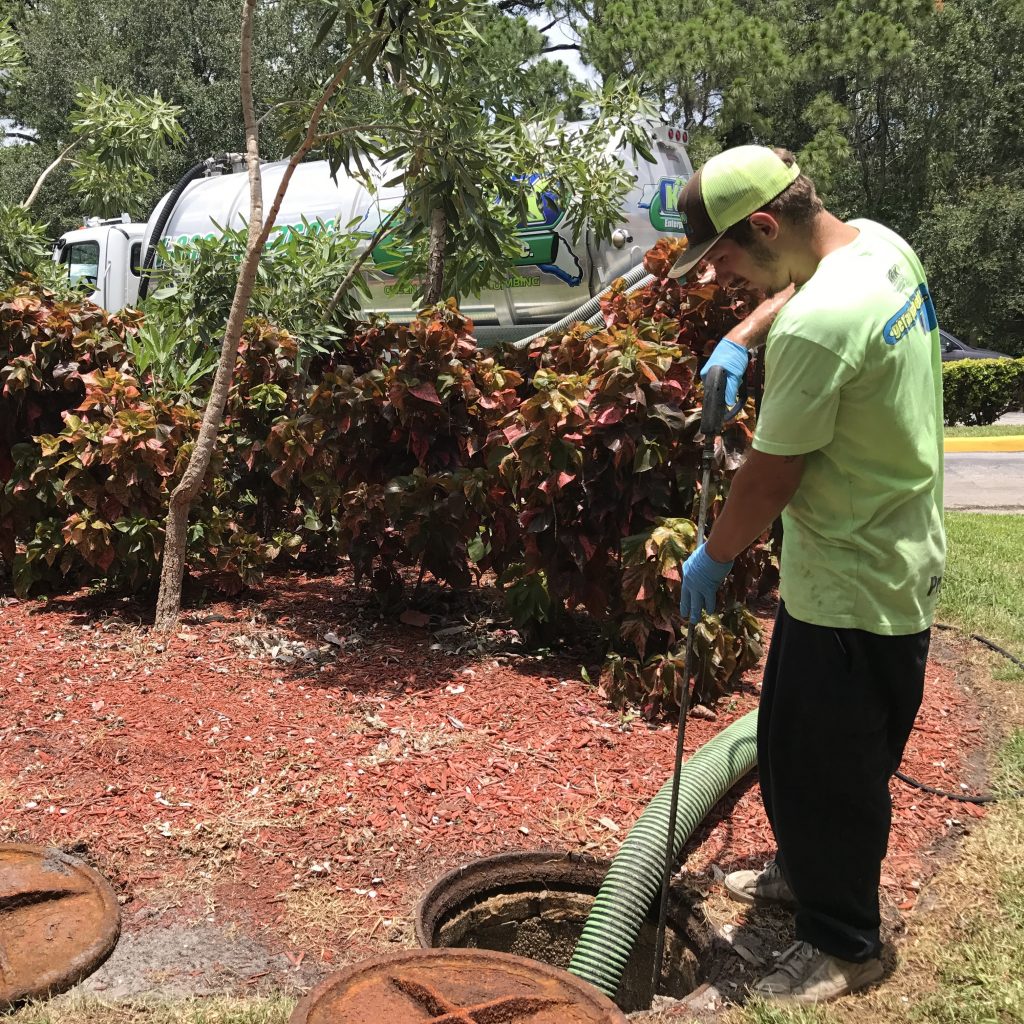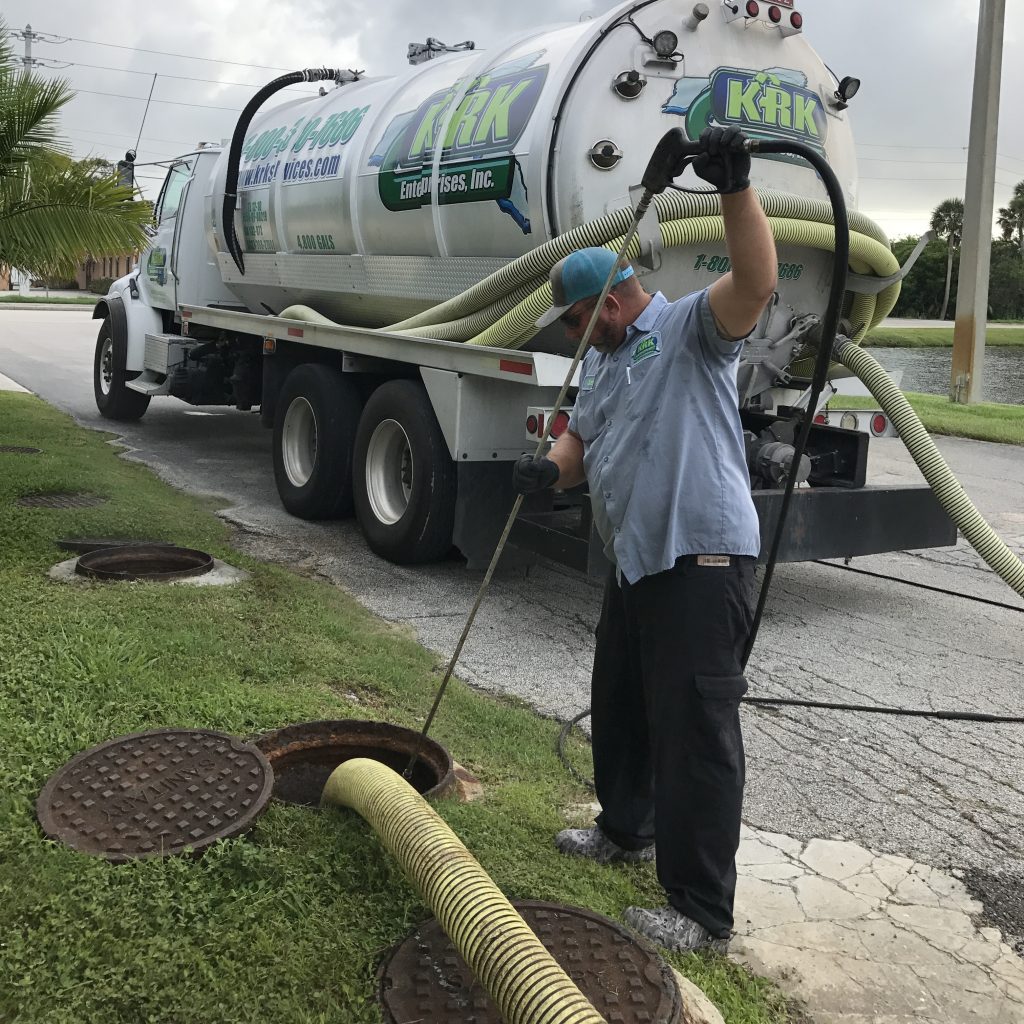
Why grease trap is required?
Commercial and industrial kitchens are required by law to have grease traps. A grease trap is a receptacle where the wastewater that contains FOG (fats, oils, grease) flow through before going into the drain. This keeps the water clear of anything that can clog the sewer system and cause blockages, foul odors, and aid in pest infestation. There are two main types of grease traps.
- Interior grease traps: Located inside the kitchen area that holds small amounts of FOG.
- Exterior grease traps: Located outside the structure near the kitchen that holds large amounts of FOG.
Grease traps are to be used at any place with a dishwasher, sink, and any plumbing fixture or fixed receptacle that is used for washing dishes and cooking utensils. Grease traps may be found in large residential homes with busy kitchens or multiple kitchen sinks.
Grease traps keeps sewer lines clear of food materials and FOG so that they can’t build up and clog the drain lines and sewer lines. This not only benefits the kitchen and the structure with the kitchen, but it benefits the municipal sewer system too.
Without grease traps, commercial and industrial kitchens would have strong and unpleasant odors, in addition to being unhygienic from the bacteria and germs that would generate. Grease traps help the municipality by eliminating the possibility of massive blockages in the municipal sewer system from FOG and food waste.
Where is a grease trap usually installed?
As mentioned above, interior grease traps are to be located at each cooking and dishing washing sink. They are also found at any plumbing fixture or fixed receptacle where dishes and cookware or utensils are cleaned. The location for most grease traps in these kitchens is under a three-compartment sink or installed in the kitchen floor.
Exterior grease traps are typically located outside the exterior door of a commercial or industrial kitchen. As most commercial or industrial kitchens are located near loading docks for food and supply deliveries, and trash receptacle, that makes for a logical location.
For residential use of grease traps, they are typically installed under the kitchen sink, especially if there are multiple sinks used. Some grease traps for homes are installed on the exterior of the home.
Does a 3 compartment sink need a grease trap?
Grease traps are required for three compartment sinks only if food matter or FOG will be washed off dishes, cooking utensils, or cookware.
How do grease traps work?
The basis of how grease traps work is that FOG (animal fats, vegetable oil, and grease) are up to fifteen percent less dense than water and doesn’t mix with water. When wastewater is emptied into a sink with a grease tap, the wastewater flows slowly, cools off, and the FOG to comes to the top and trapped by baffles. Any solids, like food waste, settles at the bottom and the water drains through into the sewer system.
What happens when a grease trap is full?
Usually, when it appears a grease trap is leaking at the top, it is usually an overflow from being too full. Grease traps get become full when they haven’t been pumped or cleaned in a while. That overflow is the results of the first compartments waste spilling into the second compartment. This overflowing from one compartment to the next will continue on and start clogging up sewer lines.

Should a grease trap be full of water?
When grease traps are filled with water, it is an indication of an outgoing grease line is clogged. This will lead to drains backing up throughout the structure if not addressed. Of the water is in an interior grease trap, pumping the trap and cleaning the greases trap will usually solve the problem. If the water is in the exterior grease trap, you’ll need to call for professional grease trap service.
Many wonder if you can use a grease trap with septic tank, and the answer is yes. For years, grease traps have been used by commercial and industrial kitchens that are on a septic tank system. Like a sewer system, without a grease trap, the FOG would accumulate inside the pipes and tank, causing blockage and creating havoc. Additionally, because septic tanks drain into a drain field, the bacteria that septic tanks depend on are in danger of providing the service as a septic system is designed.
Before installing grease traps in older homes as part of renovation, it is recommended to have a professional plumber with experience in grease traps inspect the plumbing. The older plumbing pipes may not be in condition for a grease trap set up. Call 800-330-7686 today for your grease trap needs in Fort Pierce and Port St. Lucie, Fl.

